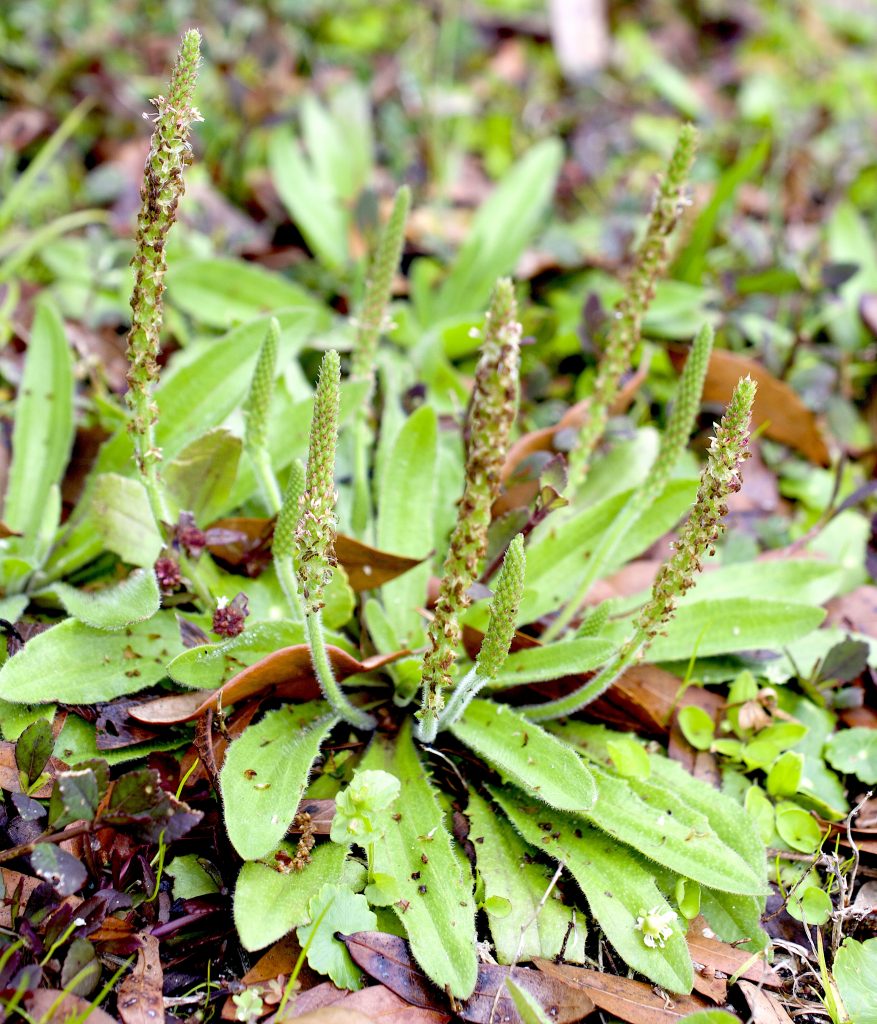
Newsletter and photos by Green Deane
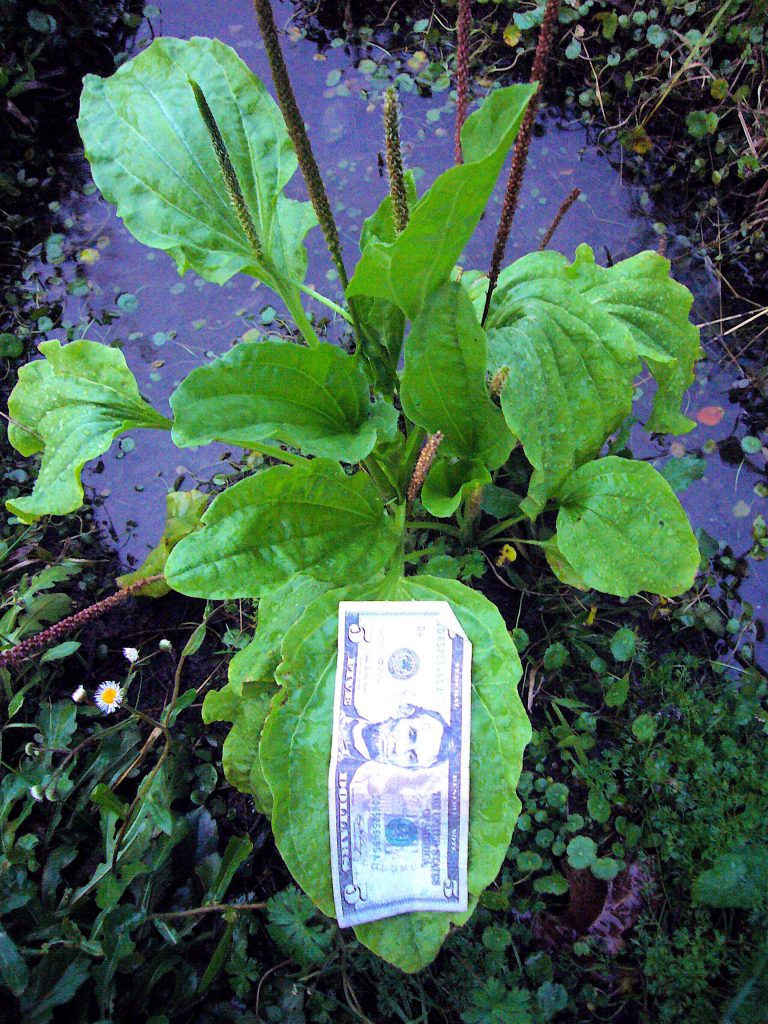
There are Plantains that look like tough bananas and there are Plantains that are low and leafy plants. They are not related. Just two different groups with the same common name. Low-growing Plantains can be native or non-native. The one pictured above is native, the Dwarf Plantain. As a genus the plants are well-known. The leaves are edible raw when young. As they age they become more bitter and stringy. Cooking makes them palatable up to a point. Then they move into the astringent medical realm. As such they are used on bites, stings and to help puncture wounds heal. The seeds are edible once produced and are the source of the commercial dietary fiber, psyllium. When finely ground the seeds are sold under the brand name Metamucil. There are numerous species of Plantagos (Plantains) with at least four common locally, P. virginiana, P. major, P. lanceolata and P. rugelii the latter which strongly resembles P. major. They are all used the same way. (P. rugelii is pink at the base of the stem.)
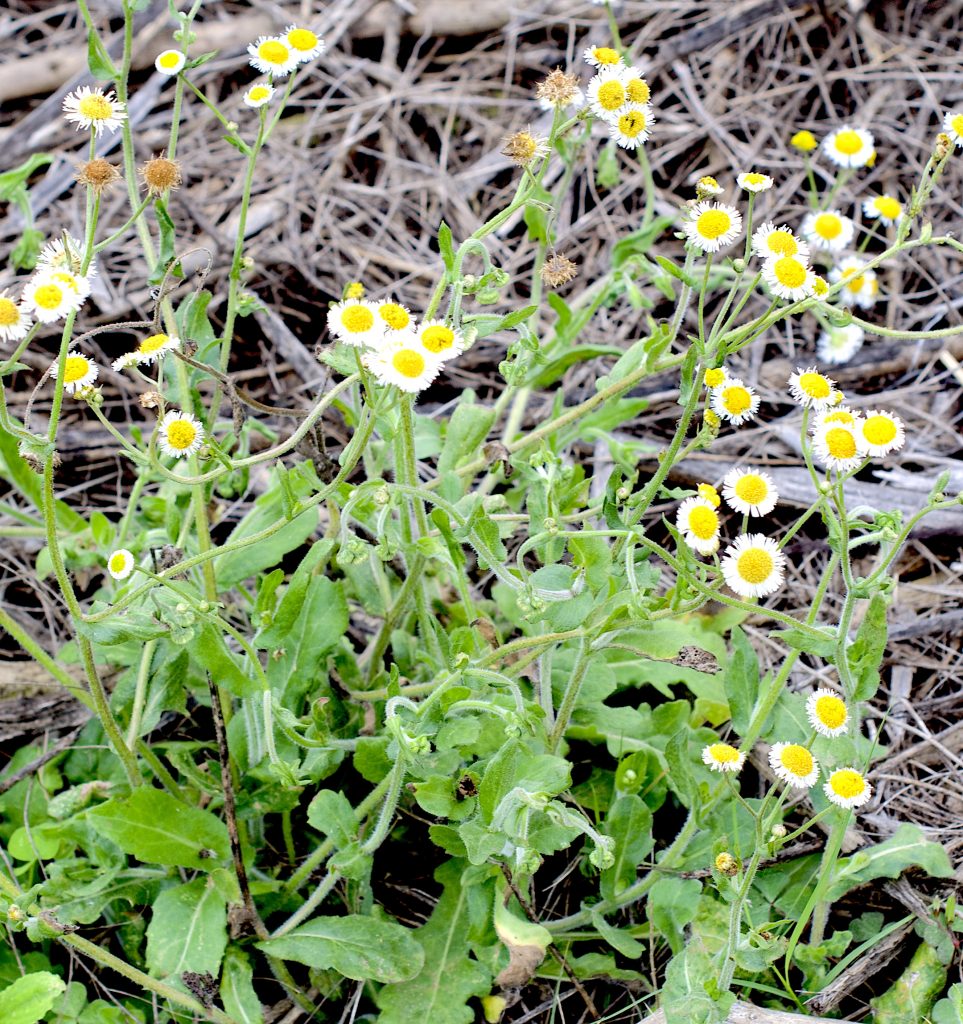
One problem beginning foragers have is confusing young Oakleaf Fleabane leaves for Dwarf Plantain leaves (they are both rosette-ish, low-growing green leaves, hairy with fibrous threads in the stem.) But the Dwarf Plantain is essentially a long skinny hairy leaf with a few teeth. The Oakleaf Fleabane is much fatter, has lobes, and does resemble oak leaves found on more northern species. You can read about the Plantains here and I have a video here.
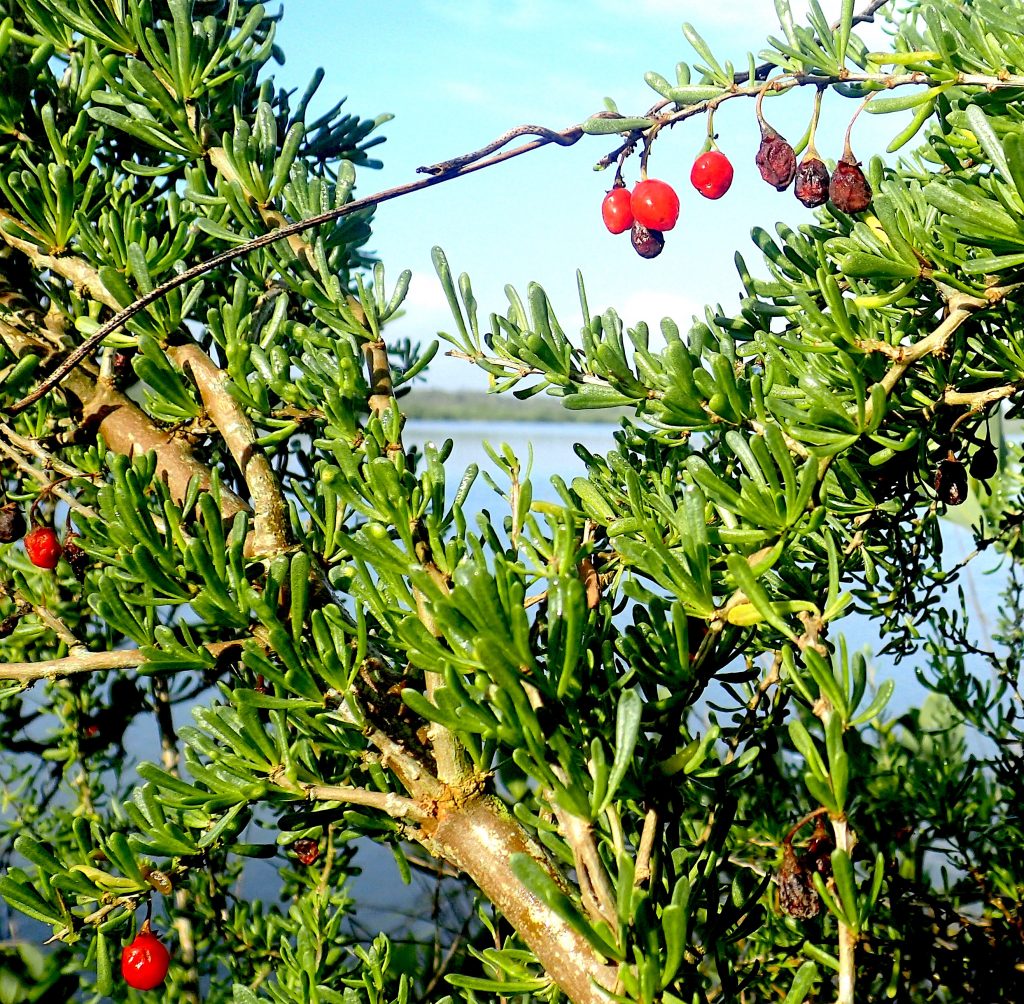
Though it has been mentioned in seasonal newsletters it is a good time to go looking for our local Goji berry. It’s an unusual plant. One would not guess it’s related to eggplant, peppers and tomatoes. The small fruit, however, does ripen to a bright red like a tomato. It has fleshy leaves, is woody, and at least as far as our local species is concerned, grows in brackish water. Even in the bests of times the plant looks like it’s dying and is covered with lichen. You can read about it here. and I have a video here.

If Longfellow had lived elsewhere — say Europe — he might have penned in his famous poem: “Under the shedding Sycamore tree the village smithy stands.” As it was Longfellow wrote about the mighty American chestnut which sadly because of a blight is nearly no more. And while mentioning Longfellow take a look at his picture on the left. Most of the photos of him show an old bearded man. This was taken when he was much younger, in 1855, when photography was young, too. And unlike other pictures from the time it’s not staged or posed. It’s more natural and gives us a glimpse of the man and personality. There’s a bit of destiny in Longfellow’s eyes. Maybe he sensed photographs would replace paintings and he wanted to look across time at us, or, us him. What did he do right after the photo was taken? Go out to dinner because he was already dressed up? Or tell the photographer he’s pay him for the (then) expensive photo next week when one of his new poems sold? When I see old photos like this I wonder what the next moment was like, when they broke pose and went on with living. Photos are frozen slivers of time.
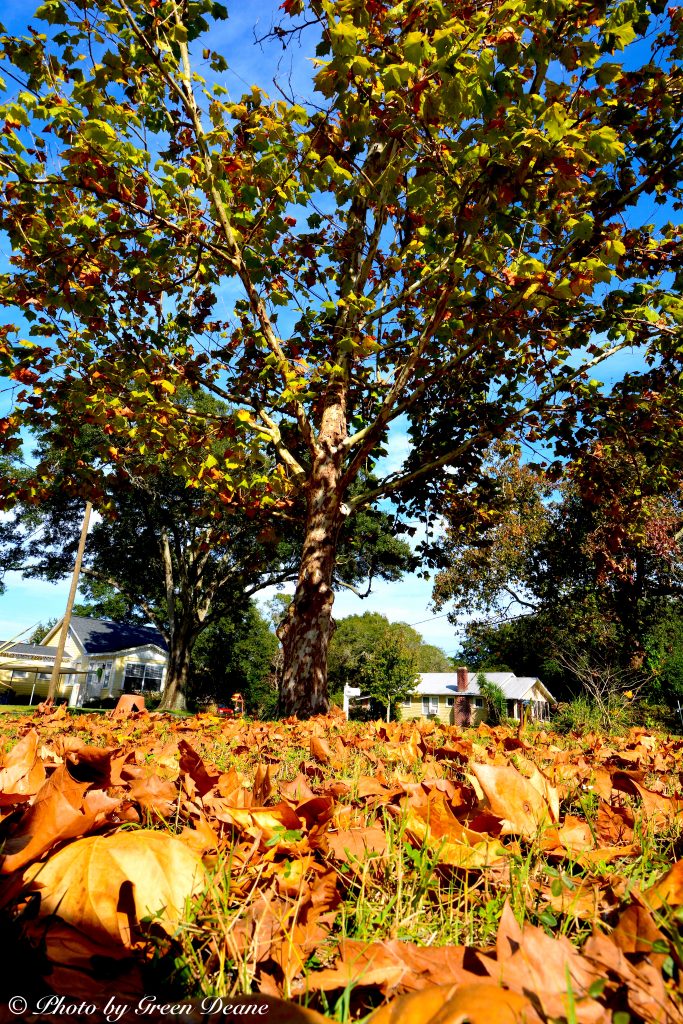
Unlike Longfellow’s chestnut tree the Sycamore gets a bad rap because of what you see in the picture right, leaves…. lots of large leaves in (my) yard. To me it’s attractive fall colors and in time more stuff for the compost pile. But, it’s the bane of many homeowners who want carefree landscaping. Sycamores, however, are forager friendly. The sap is drinkable and one could make a syrup out of it if one wanted to spend the time and energy. The sap tastes like slightly sweet water, and it is already filtered by the tree so also quite safe to drink. The wood is inert so it can be used in a variety of ways with food or cooking, from skewers over the campfire to primitive forks et cetera. To read more about the maligned Sycamore go here.
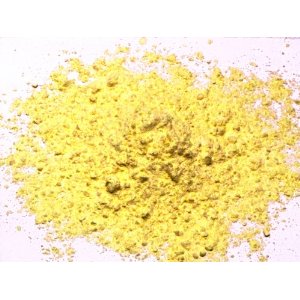
Before the state of Florida went on the Internet most of the information it thought fit for its citizens to know was produced in pamphlet form. When the shift was made to the Internet some information got lost or was dropped. One useful bit of advice was using sublimed sulfur to keep off ticks. Available online or through local pharmacies or chemical supply stores you put it in an old sock or the like and dust your cuffs and collar with it before entering tick habitat. It either repels them or vastly slows them down from finding a place to grab on, giving you more time to find the hardy ones. I have used it for many years very successfully. I still find a tick or two on me now and then but not attached. While I am not a biochemist I would suspect this would not be something you would use if you have a sulfur allergy.
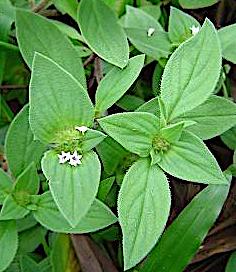
A plant that falls into the crack between edible and not edible is Richardia scabra, aka Florida Pusley, photo left. It’s in a genus that has species used to make you throw up. In fact one is called Richardia emetica. That is not encouraging. Some people mistake R. scabra for seasonal chickweed, which is a Stellaria, a totally different genus. The plants vaguely resemble each other if one overlooks several details and that fact that real chickweed only grows here in the winter time. R. scabra is a species for which I have never found any ethnobotanical references to regarding edibility. In fact it is one of three common plants that seems to have either not been used by the natives or somehow were not reported. The other two are Amaranthus australis and Hibiscus moscheutos. I know from modern reports that A. australis is edible but as for the H. moscheutos I have no idea though it comes from a very edible genus. It’s blossoms should be edible. R. scabra is not on my site as an edible though I know of two people who mistook it for chickweed and ate it for quite a while. And I know two people who did not mistake it: They know it is a Richardia and they eat it from time to time. That might be a key element. Without any ethnobotanical reference perhaps a little now and then is okay but a steady diet of it is not. It is one of those unknown things. Also that the low-growing pinkish blossomed form that seems to have proliferated after the hurricanes 15 or so years ago is R. grandiflora. It, too, is officially not edible.

It will start out a little cool on our foraging walk this Saturday in Jacksonville but there are plenty of edibles to find this time of year. And it will be a little warmer for our class in Orlando Sunday.
Saturday, January 12th, Florida State College,south campus, 11901 Beach Blvd., Jacksonville, 32246. We will meet at building “D” next to the administration parking lot. 9 a.m. to noon.
Sunday, January 13th, Blanchard Park, 10501 Jay Blanchard Trail, Orlando, FL 32817. 9 a.m. to noon, meet at the tennis courts next to YMCA building.
Saturday, January 19th, Wickham Park: 2500 Parkway Drive, Melbourne, FL 32935-2335. 9 a.m. to noon. Meet at the “dog park” inside the park .
Sunday, January 20th, Dreher Park, 1200 Southern Blvd., West Palm Beach, 33405. p a.m. to noon. Meet just north of the science center.
For more information about the classes go here.

All of Green Deane’s videos available for free on You Tube. They do have ads on them so every time you watch a Green Deane video I get a quarter of one cent. Four views, one cent. Not exactly a large money-maker but it helps pays for this newsletter. If you want to see the videos without ads and some in slightly better quality you can order the DVD set. It is nine DVDs with 15 videos on each for a total of 135 videos. Many people want their own copy of the videos or they have a slow service and its easier to order then to watch them on-line. The DVDs make a good gift for that forager you know especially on long, cold winter months. Individual DVDs can also be ordered or you can pick and choose. You can order them by clicking on the button on the top right hand side of this page (if your window is open wide enough.) Or you can go here.

Want to identify a plant? Looking for a foraging reference? Do you have a UFO, an Unidentified Flowering Object you want identified? On the Green Deane Forum we chat about foraging all year. And it’s not just about warm-weather plants or just North American flora. Many nations around the world share common weeds so there’s a lot to talk about. There’s also more than weeds. The reference section has information for foraging around the world. There are also articles on food preservation, and forgotten skills from making bows to fermenting food. One special section is “From the Frightening Mail Bag” where we learn from people who eat first then ask questions later. You can join the forum by clicking on “forum” in the menu.

Donations to upgrade EatTheWeeds.com have gone well. Thank you to all who have contributed to either via the Go Fund Me link, the PayPal donation link or by writing to Green Deane POB 941793 Maitland FL, 32794. There are many needs left such as expanding the foraging teacher page and the page on monotypic edibles. Several functions were also lost when we transitioned to the new website. I’m still having a hard time finding articles I wrote! There’s always something and such things get more complex and expensive every year. Indeed, the average email cost to send each newsletter is $20.
If you would like to donate to Eat The Weeds please click here. Or you can use my Go Fund Me link, or by writing to Green Deane POB 941793 Maitland FL, 32794
This is weekly issue 337.

